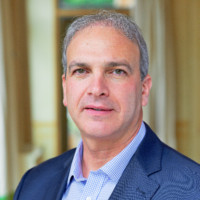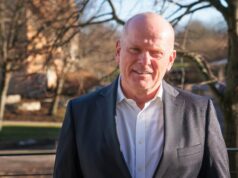
Saniona’s CEO has high-flying plans
Biotech company Saniona has made significant advances on several fronts during the last twelve months with both compelling data from parallel clinical studies, regulatory interactions with health authorities the recruitment of key roles to the company and a second potentially lucrative collaboration agreement with pharma giant Boehringer Ingelheim. BioStock contacted the company’s CEO, Rami Levin, to get his views on the first half of 2020 and to find out more about the plans for the coming 12 months. It is clear that Levin has high ambitions, both in the short and long term.
Sanionas proprietary rare disease pipeline is the company´s main value driver, where Tesomet is the most advanced treatment in development. The candidate is approaching late stage registration studies in both hypothalamic obesity (HO) and Prader-Willis syndrome (PWS), two rare eating disorders, which Saniona intends to continue developing up to registration and commercialization.
Saniona also has two earlier stage proprietary programs: SAN711 and SAN903, molecules which Saniona also intends to develop and ultimately commercialize themselves.
 SAN711 is a first-in-class molecule that is specifically designed to normalize aberrant activity associated with rare neuropathic pain disorders or rare intractable neuropathic itch conditions – rare conditions where no efficient treatment exists today resulting in poor quality of life for the affected patients.
SAN711 is a first-in-class molecule that is specifically designed to normalize aberrant activity associated with rare neuropathic pain disorders or rare intractable neuropathic itch conditions – rare conditions where no efficient treatment exists today resulting in poor quality of life for the affected patients.
SAN903 is currently under preclinical development and positioned for treatment of rare inflammatory/fibrotic diseases with no or very inefficient treatment options currently available.
Positive study results
In late April, Saniona announced positive preliminary results from its phase II study with Tesomet in HO. In addition to the results showing that Tesomet was safe and well tolerated, robust efficacy data with statistically significant improvements in body weight loss, waist circumference and glycaemic control were also presented.
The company has also had success this year in PWS, most recently in the form of positive feedback from FDA regarding the proposed regulatory path forward for Tesomet in PWS and the proposed study design of its upcoming phase IIb study. This followed the important progress made in 2019, when positive phase IIa results showed that treatment with Tesomet resulted in improvements in hyperphagia (strong hunger sensations) and weight loss.
CEO comments on the advancements
To find out more about the year so far and what the future plans look like, BioStock contacted Saniona’s CEO, Rami Levin, who, from his base in Boston, pulls the strings transforming Saniona into a late stage clinical development company with a growing presence in the US, starting to contemplate what a commercial launch could look like.
»It has been an extremely productive and collaborative dialogue with the FDA in an effort to bring Tesomet [in PWS] to the market as quickly as possible and address the unmet needs of these patients and caregivers. Moving forward, we will be having similar discussions with the FDA on HO later this year.« – Rami Levin, vd Saniona
Rami Levin, your main goals right now are to advance the clinical development of Tesomet all the way to registration and commercialization, and to advance the earlier stage molecules SAN711 and SAN903 into phase I clinical trials and beyond. What are the most important milestones you have reached so far?
– There have been several key milestones we have reached so far:

– In clinical development, we were able to continue the development of Tesomet in two rare disease indications, where there are no approved treatments available today. Tesomet will be entering late stage pivotal trials in both indications within the next 6-10 months.
– We announced positive preliminary results of Tesomet in HO. The results are extremely encouraging and support to continued development of Tesomet in HO and moving into a phase III registration trial.
– We also had positive discussions with the FDA on the regulatory path forward for Tesomet in PWS. It has been an extremely productive and collaborative dialogue with the FDA in an effort to bring Tesomet to the market as quickly as possible and address the unmet needs of these patients and caregivers. Moving forward, we will be having similar discussions with the FDA on HO later this year.
– From our early stage pipeline, we continued to develop SAN711, a first-in-class molecule that is specifically designed to normalize aberrant activity associated with rare neuropathic pain disorders or rare intractable neuropathic itch conditions – rare conditions where no efficient treatment exists today, resulting in poor quality of life for the affected patients. SAN711 is now ready to enter into phase I of clinical development. In addition, our preclinical development stage molecule, SAN903, is positioned for treatment of rare inflammatory/fibrotic diseases.
Another important focus is to build a presence in the US. How is this work progressing and what does it entail?
– Building our presence in the US has a broad meaning and ranges from recruiting top talent into the organization, to interacting with key stakeholders including key opinion leaders, clinical trial sites investors and banks and finally patients and patient organizations.
– We have made progress on all fronts. Recently we have hired a CMO & Head of Clinical Development to the company. This is a key role that will build the clinical development team and advance our clinical development programs in both HO and PWS. We are also in the process of hiring a US based Chief Financial Officer (CFO). A key role both for financing and investor relations. Following this there will be other roles to hire in order to manage the growing business needs.
– In July we also moved into our new Saniona office in the Boston area.
»If all goes well, we anticipate that Tesomet could reach the market as early as mid 2023.«
Looking ahead 12 months, which are the most important potential value drivers for Saniona?
– The next 12 months will focus on advancing the programs and activities across all three of our strategic priorities. The main value drivers over this period will be:
-
- The FDA approval of the IND submission followed by the initiation of two pivotal trials, one in HO and one in PWS, that will take Tesomet all the way to registration
- Advancing SAN711 and SAN903 into phase I clinical trials
- Building our US presence and hiring top talent in key roles
When do you hope to receive market approval for Tesomet in HO and PWS?
– We still have a way to go and many milestones ahead of us. If all goes well, we anticipate that Tesomet could reach the market as early as mid 2023.
In addition to the proprietary focused research in rare diseases, you also focus on establishing collaborations, which are expected to generate milestone payments and royalties once the products are commercialized. Recently you struck a second lucrative collaboration deal with Boehringer Ingelheim. Would you say this is a typical deal for Saniona, given the company´s strategy and business model, and are there more in the pipeline going forward?
– Our main focus is on our growth drivers which you rightfully point out are our proprietary research, development and ultimately commercialization. As part of the research we will identify molecules better suited for development in larger indications and not rare diseases. In those instances, we intend to partner/out-license those molecules to larger companies, like Boehringer Ingelheim, who would be able to develop and commercialize these molecules. In return we will get milestone payments throughout the development and royalty payments once the products reach the market.
– This business model will ensure that in the future we will have two parallel revenue streams:
- The main revenue stream coming from the commercialization of proprietary treatments that we develop and commercialize ourselves
- A secondary revenue stream coming from milestone payments and royalties of out licensed molecules.
On June 22, you announced that Saniona has raised 22 MSEK through the sale of shares in Scandion Oncology A/S. The sale of shares brings Saniona’s ownership stake in Scandion Oncology below 15%. Could you comment on the timing of the sale?
– Continuing to hold Scandion shares is not a strategic focus for Saniona. The timing was very simply linked with the significant development in the share price of Scandion and in parallel, our need to focus our efforts on our strategic priorities, including the initiation of our late stage clinical development programs, which require increasing levels of resources.
»Our main focus is on our proprietary treatments in development […] We anticipate bringing these treatments to market and commercializing them ourselves. They will represent the majority of our future revenues. I also anticipate having a second revenue stream stemming from partnerships, out-licensing agreements and spinouts.«
Scandion Oncology, which has become a highly successful cancer start-up, is a spin-out from Saniona´s oncology assets. Other successful spinouts from Saniona are Ataxion (Cadent Therapeutics Inc.) and Initiator Pharma. Looking ahead, do you foresee additional future spinouts on dormant assets in your pipeline?
– Our main focus is on our proprietary treatments in development, including Tesomet for hypothalamic obesity and Prader Willi Syndrome, SAN711 for rare neuropathic pain disorders or rare intractable neuropathic itch conditions and SAN903 for rare inflammatory/fibrotic diseases. We anticipate bringing these treatments to market and commercializing them ourselves. They will represent the majority of our future revenues.
– I also anticipate having a second revenue stream stemming from partnerships, out-licensing agreements and spinouts, such as the ones you mentioned.
Finally, what are your plans for the summer?
– At the moment it’s very dependent on Covid-19, but I intend to spend time with the family at a lake house enjoying boating, jet skiing and other water sport activities.
The content of BioStock’s news and analyses is independent but the work of BioStock is to a certain degree financed by life science companies. The above article concerns a company from which BioStock has received financing.

